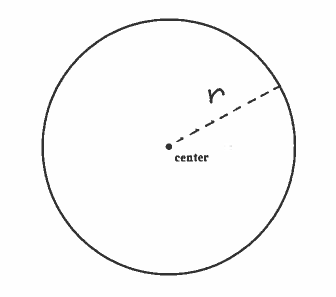SOLUTION 4: Draw a circle of radius $r$, and assume that $r$ is a function of time $t$.

$ \ \ \ \ $ a.) The circumference of a circle is
$$C=2 \pi r$$
GIVEN: $ \ \ \ \displaystyle{ dr \over dt } = 10 \ meters/min. $
FIND: $ \ \ \ \displaystyle{ dC \over dt } $ when $ r =20 \ m. $
Now differentiate the circumference equation with respect to time $t $ getting
$$ D \{ C \} = D \{ 2 \pi r \} \ \ \ \longrightarrow $$
$$ \displaystyle{ dC \over dt } = 2 \pi \displaystyle{ dr \over dt } \ \ \ \longrightarrow $$
$\Big($ Now let $\displaystyle{ dr \over dt } = 10. \Big)$
$$ \displaystyle{ dC \over dt } = 2 \pi (10) \ \ \ \longrightarrow $$
$$ \displaystyle{ dC \over dt } = 20 \pi \ \ m/min. \approx 62.8 \ \ meters/min. $$
$ \ \ \ \ $ b.) The area of a circle is
$$ A = \pi r^2 $$
GIVEN: $ \ \ \ \displaystyle{ dr \over dt } = 10 \ meters/min. $
FIND: $ \ \ \ \displaystyle{ dA \over dt } $ when $ r =20 \ m. $
Now differentiate the area equation with respect to time $t $ getting
$$ D \{ A \} = D \{ \pi r^2 \} \ \ \ \longrightarrow $$
$$ \displaystyle{ dA \over dt } = \pi \cdot 2 r \displaystyle{ dr \over dt } \ \ \ \longrightarrow $$
$\Big($ Now let $\displaystyle{ dr \over dt } = 10$ and $r=20. \Big)$
$$ \displaystyle{ dA \over dt } = 2 \pi (20)(10) = 400 \pi \ \ meters^2/min. \approx 1256.6 \ \ meters^2/min. $$
Click HERE to return to the list of problems.

